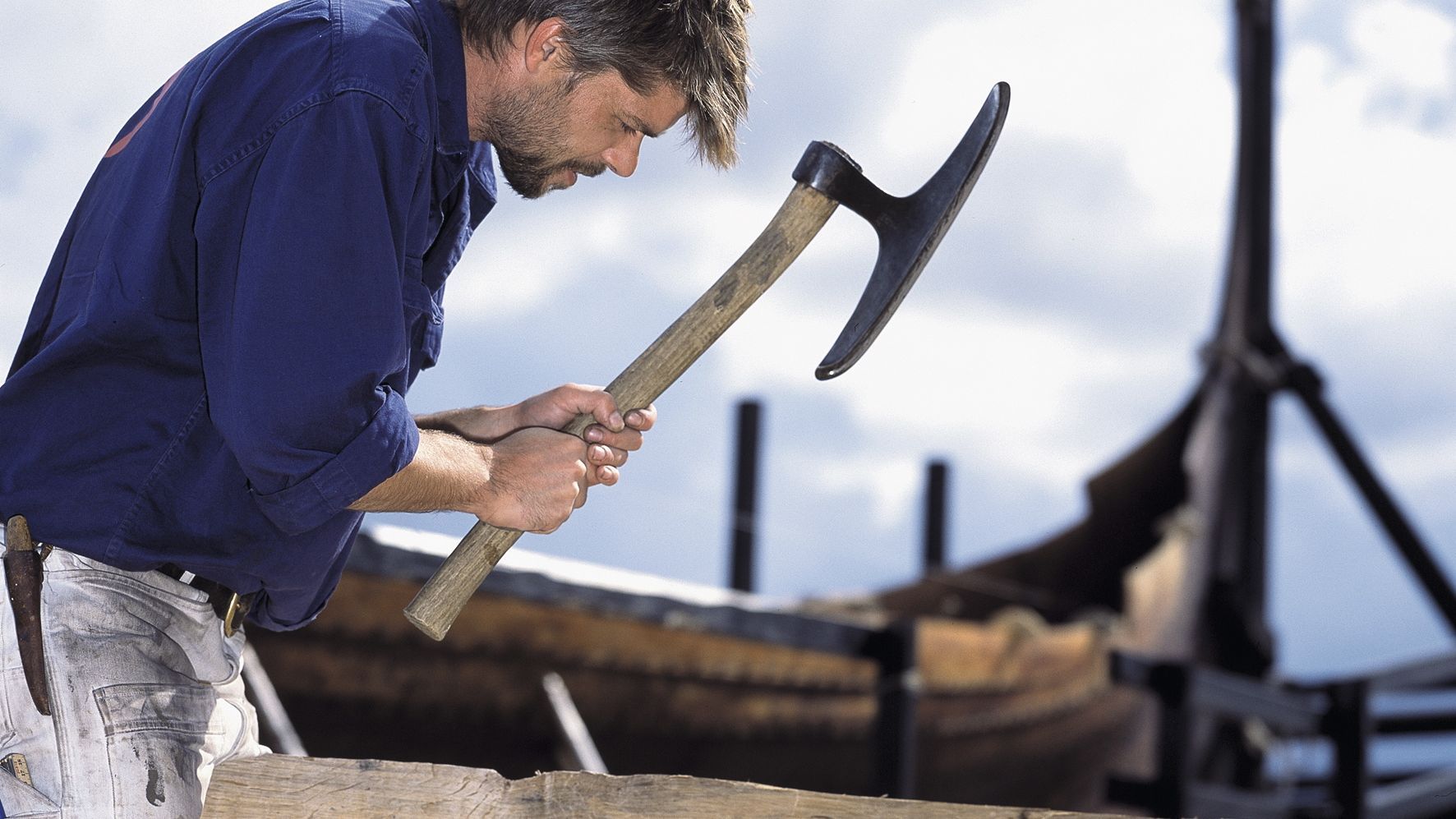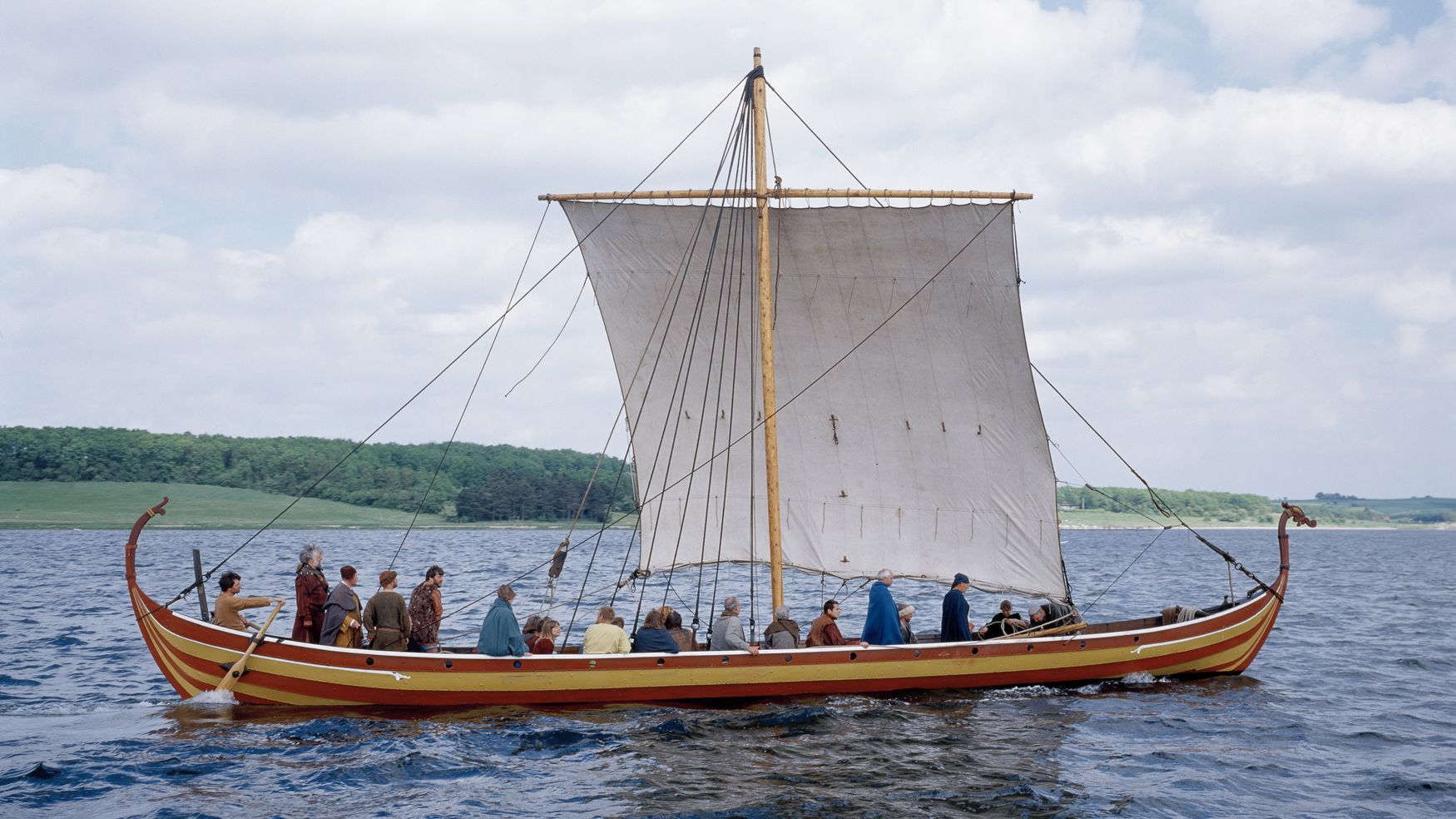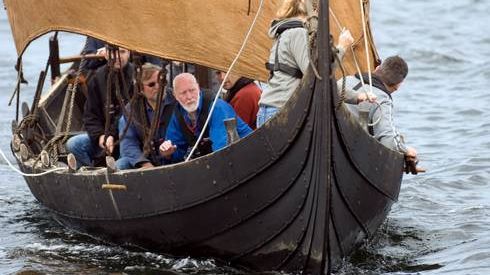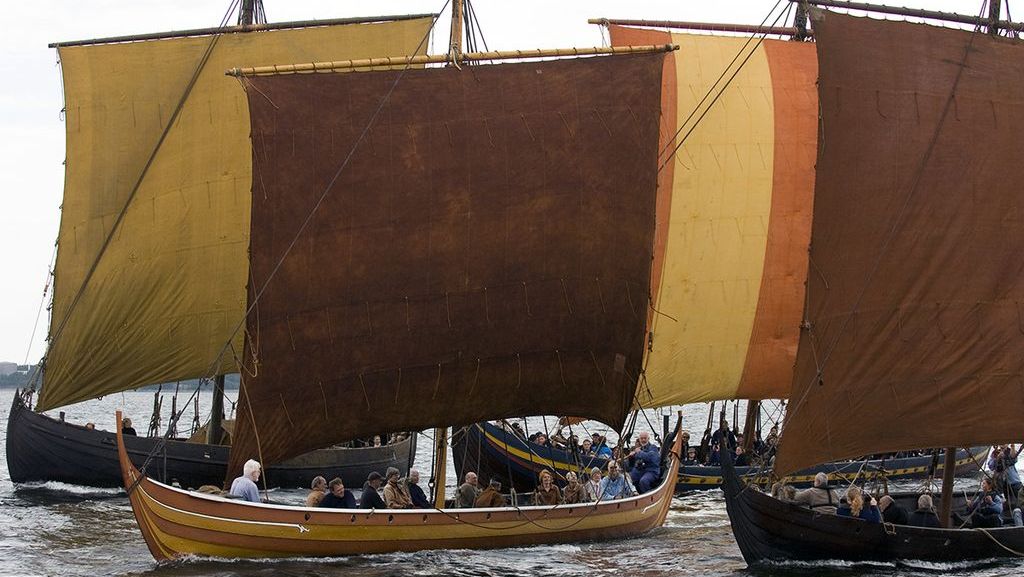The Sea Stallion from Glendalough 2000 - 2004
The Sea Stallion from Glendalough is a reconstruction of the great longship Skuldelev 2.
The ship is a war machine, built to carry many warriors at high speed. It is a bold design, both heavy and strong enough to carry its 112 m² sail, but also sufficiently light and long to be rowed by a crew of 60. A compromise between strength and lightness.
The ship's materials
High-quality materials were used in building the original ship, for the sake of appearance and to enhance the strength of the construction. It was therefore necessary to select materials for the reconstruction which in type and properties, came as close to as possible to the original.
During the building process the boatbuilders examined how many resources such as wood, tar, iron, wool and hemp were used for the longship. This gave us a picture of the power structures that were required to provide such extensive resources and necessary organisation.
For the Sea Stallion were used:
- 4 oak trees for keel, forestem and afterstem
- 14 oak tress for planks
- 2 oak trees for keelson and mast-fish
- 250 pieces of crooked oak for frames
- 3 ash trees for the top strake with oarports
- 2 pine trees for mast and yard
- 35 pine trees for oars
- 10 willow trees for 1,000 wooden nails
- 10 lime, spruce and pine trees for shields
- 8.000 iron rivets
- 600 litres of tar
- 112 m² sail canvas of flax
- 2.000 mettres of hemp rope
Testing the maritime capability of the Sea Stallion
The 30 metre long reconstruction was launched in 2004. The dream of recreating all five Skuldelev ships had been fulfilled. The next step in the experiment was a voyage in the wake of the vikings to test the reconstruction. The voyage from Roskilde to Dublin and back in 2007-2008 was the culmination of many years of work, and the most ambitious arcaheological experiment the museum has ever carried out.
The Sea Stallion is lying in the Museum Harboor. The longship is easy to recognize with its characteristic blue, red and yellow strakes.
» You can also visit the original ship in the Viking Ship Hall...



